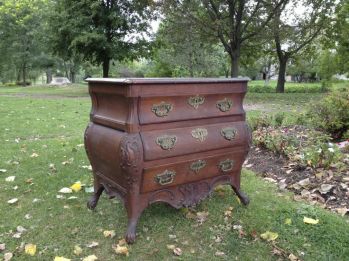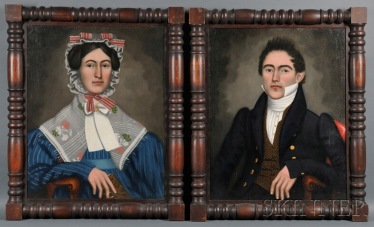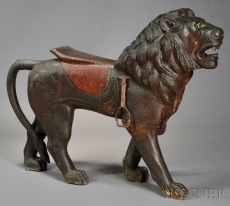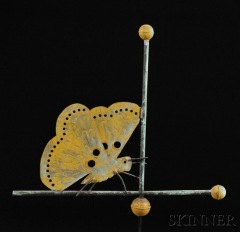Country Styling
Who says country antiques are out of vogue? As many in the design world know, styles are cyclical. It just so happens we’re currently experiencing a resurgence in the popularity of country antiques, but with a twist of modern design and philosophy.
The mid-20th century gave rise to a new emphasis on the country aesthetic. At a time when urban sprawl was rising and people were leaving their city homes for more suburban areas, so too were they abandoning the formal aesthetic associated with their urban centers. Over the course of a few decades, one can see a dramatic increase in demand and price for these interesting or painted country pieces. Decorating your eighteenth-century saltbox or colonial with the items they were intended to house became all the rage. And then it wasn’t.
Browsing design magazines of the 80s, 90s, and early 2000s, we notice tastes couldn’t have been more varied, from the excessive use of Chintz, floral patterns and pastels, to minimalism and inflatable furniture. While country kitchens and shabby-chic had their day, there wasn’t a true revival of country Americana until just a few years ago. This contemporary/transitional movement, utilizing aspects of modern and country design, was a response to a cultural and social disconnection grown from the prevalence of smartphones and the internet. Individuals became more reliant on technology and less on personal interaction, which, in many instances, reflected in a minimalist design preference.  But through this same technology, a new style was idealized, propagated, and sold. Websites like Tumblr, Pinterest, and Etsy as well as blogs like Design-milk and Apartment Therapy and the App Instagram, became sounding boards and DIY inspiration for hundreds of millions of people. Finally, interior design wasn’t simply something you paid somebody else to do. The internet made decorating your living space empowering, personal, and intimate. Increased accessibility to ideas, designs, and the objects themselves led to the effective melding of styles. This new contemporary/transitional concept focuses on core elements of modern and country decorating: clean lines, neutral colors, form, and function; utilizes newer concepts of DIY and repurposing/upcycling. Two close friends of mine, Will and Chelsea Lord, perfectly emulate this design in their home in Maynard, Massachusetts.
But through this same technology, a new style was idealized, propagated, and sold. Websites like Tumblr, Pinterest, and Etsy as well as blogs like Design-milk and Apartment Therapy and the App Instagram, became sounding boards and DIY inspiration for hundreds of millions of people. Finally, interior design wasn’t simply something you paid somebody else to do. The internet made decorating your living space empowering, personal, and intimate. Increased accessibility to ideas, designs, and the objects themselves led to the effective melding of styles. This new contemporary/transitional concept focuses on core elements of modern and country decorating: clean lines, neutral colors, form, and function; utilizes newer concepts of DIY and repurposing/upcycling. Two close friends of mine, Will and Chelsea Lord, perfectly emulate this design in their home in Maynard, Massachusetts.
Will, a Skinner employee, and his wife Chelsea, both have degrees from the Savannah College of Art and Design; Will in painting and Chelsea in metals and jewels. Both have heavily graphic- and design-oriented backgrounds that contributed to their success in curating their first home. The house is a 1920 colonial that backs up to a accompanying barn foundation, with a leaf-ridden yard, two lively dogs, and a newly installed vegetable garden. Stepping into the home I’m greeted by a central foyer with four archways: three leading to the dining room, kitchen, and living room, and one to the upstairs.
Immediately upon entering I can see clean modern lines, a neutral-based color scheme, and country furnishings, all incorporated into a thoughtful, overarching, contemporary theme. Coupled with the inviting, warm, and engaging feel of the house, the two have created a masterpiece by today’s design standards.
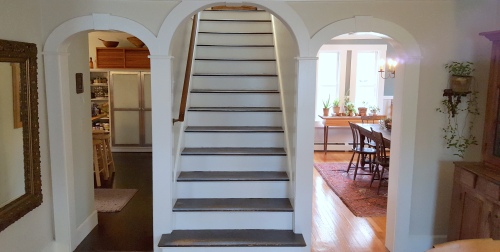 The foyer is a larger room with a cozy corner comprised of a wood-burning stove, Windsor chairs, a candlestand, and an acrylic landscape of a lake, perfect for a cold New England winter night. Stepping into the living room, you see two wing chairs flanking a large steamer trunk acting as a TV console, and comfortable-looking sofa, and a few DIY projects: a barn-board top table, antique rugs converted to pillows, and a mounted arrowhead shadowbox. The walls here are decorated with an abstract landscape, a quail hunting lithograph, and a shore scene.
The foyer is a larger room with a cozy corner comprised of a wood-burning stove, Windsor chairs, a candlestand, and an acrylic landscape of a lake, perfect for a cold New England winter night. Stepping into the living room, you see two wing chairs flanking a large steamer trunk acting as a TV console, and comfortable-looking sofa, and a few DIY projects: a barn-board top table, antique rugs converted to pillows, and a mounted arrowhead shadowbox. The walls here are decorated with an abstract landscape, a quail hunting lithograph, and a shore scene.
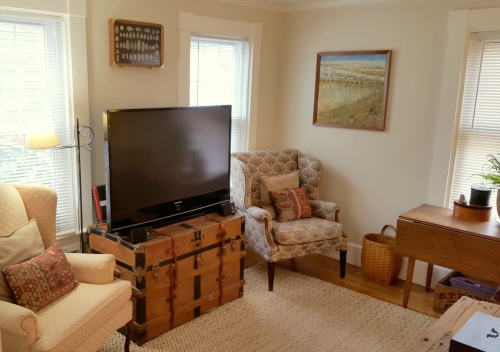
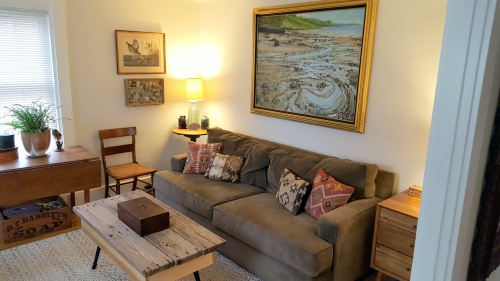 Next we go into the dining room, centered by a country pine farm table and six Windsor chairs. Here there are a pair of cast iron architectural elements of fruit, bought at a garage sale in Peterborough, New Hampshire and used as wall ornaments above a pair of ladder-back side chairs.
Next we go into the dining room, centered by a country pine farm table and six Windsor chairs. Here there are a pair of cast iron architectural elements of fruit, bought at a garage sale in Peterborough, New Hampshire and used as wall ornaments above a pair of ladder-back side chairs.
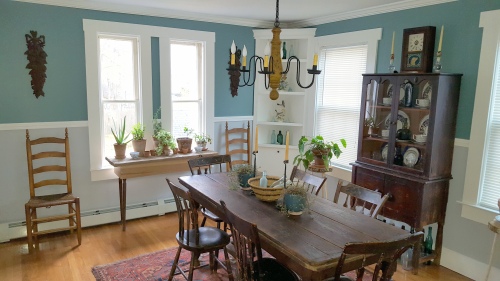 Transitioning to the kitchen, more modern design elements are highlighted. A large, clean space with strong lines and little ornamentation, exhibiting a central island, stainless steel appliances, a gas range, and granite countertops. The only aesthetic indulgences Will and Chelsea added were a few baskets atop their pantry and three shelves of aquamarine glass bottles. These bottles are one of my favorite design elements throughout the house. They’re displayed in a simple manner and are pleasing to the eyes because of their soft and sometimes opaque aquamarine color. This also proves an affordable way to decorate wall space as these bottles typically cost between $1 and $5 each.
Transitioning to the kitchen, more modern design elements are highlighted. A large, clean space with strong lines and little ornamentation, exhibiting a central island, stainless steel appliances, a gas range, and granite countertops. The only aesthetic indulgences Will and Chelsea added were a few baskets atop their pantry and three shelves of aquamarine glass bottles. These bottles are one of my favorite design elements throughout the house. They’re displayed in a simple manner and are pleasing to the eyes because of their soft and sometimes opaque aquamarine color. This also proves an affordable way to decorate wall space as these bottles typically cost between $1 and $5 each.
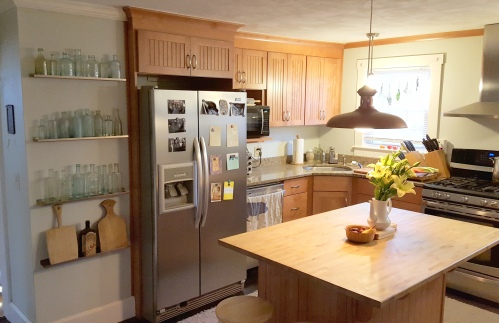
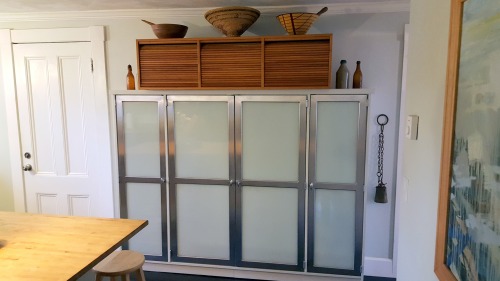 The success of the house is not purely attributed to the placement of the objects, but by the objects themselves and the stories they tell. Will and Chelsea furnish their homes on a budget, purchasing at auction and garage sales, as well as utilizing items found while metal detecting, a hobby of Will’s. They are also notorious DIY-ers, repurposing anything from a blown glass pickle bottle to parts of their wedding centerpieces.
The success of the house is not purely attributed to the placement of the objects, but by the objects themselves and the stories they tell. Will and Chelsea furnish their homes on a budget, purchasing at auction and garage sales, as well as utilizing items found while metal detecting, a hobby of Will’s. They are also notorious DIY-ers, repurposing anything from a blown glass pickle bottle to parts of their wedding centerpieces.
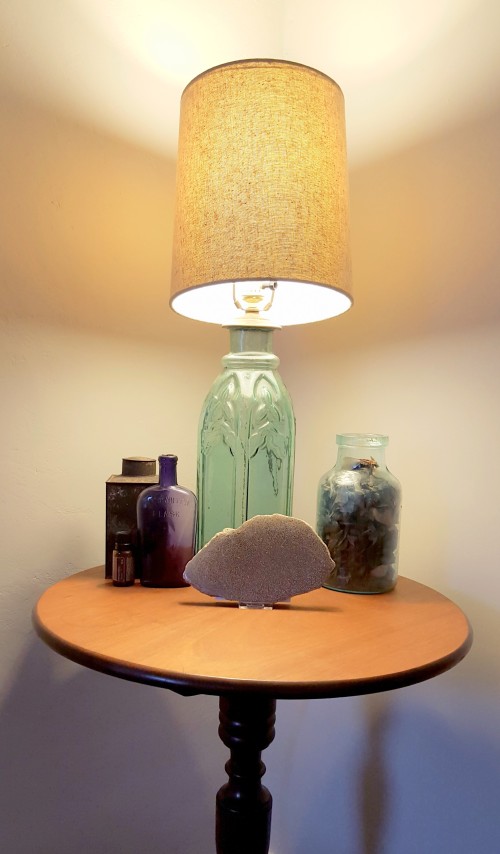 It seems that everything in their house has a story to be told, and that’s just what Will and Chelsea want to do. Instead of fabricating a cookie-cutter, Pottery Barn interior, the Lords have filled their living space with engaging and interactive items, leaving you to wonder their history. They believe that a home should tell a narrative and exhibit an inviting feel, tempting those within it to interact with the pieces making for a more intimate experience. This allows you to feel connected with not only the objects, but the space as well. I couldn’t help but inquire about a few pieces myself, in particular a coat rack repurposed from an organ and the his and hers bed trays fashioned from an old stave-constructed barrel. I found myself enjoying the tour more and more with every story told, precisely as was intended.
It seems that everything in their house has a story to be told, and that’s just what Will and Chelsea want to do. Instead of fabricating a cookie-cutter, Pottery Barn interior, the Lords have filled their living space with engaging and interactive items, leaving you to wonder their history. They believe that a home should tell a narrative and exhibit an inviting feel, tempting those within it to interact with the pieces making for a more intimate experience. This allows you to feel connected with not only the objects, but the space as well. I couldn’t help but inquire about a few pieces myself, in particular a coat rack repurposed from an organ and the his and hers bed trays fashioned from an old stave-constructed barrel. I found myself enjoying the tour more and more with every story told, precisely as was intended.
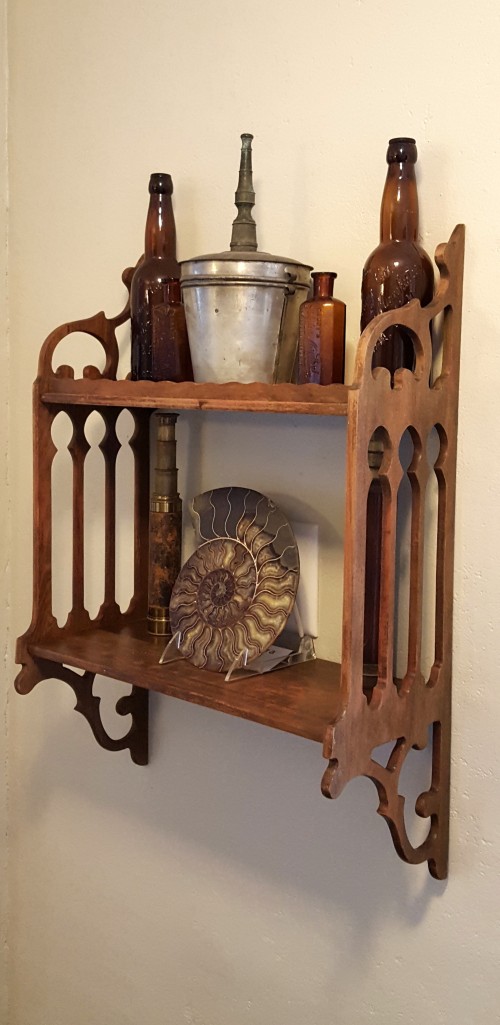 Will and Chelsea attribute the success of their house mostly to compromise. While Will’s background is almost purely in the country aesthetic due to his upbringing around antique New England homes, Chelsea finds herself drawn to more modern living. A great example of this compromise is seen in the corner of their living room. The piece is a colorless glass lamp lacking a base, with clean form and no ornamentation. This lamp sits atop a cross-section of a tree used as the base from one of their wedding centerpieces. Trapped between these two is a handful of aged coins found while metal detecting.
Will and Chelsea attribute the success of their house mostly to compromise. While Will’s background is almost purely in the country aesthetic due to his upbringing around antique New England homes, Chelsea finds herself drawn to more modern living. A great example of this compromise is seen in the corner of their living room. The piece is a colorless glass lamp lacking a base, with clean form and no ornamentation. This lamp sits atop a cross-section of a tree used as the base from one of their wedding centerpieces. Trapped between these two is a handful of aged coins found while metal detecting.
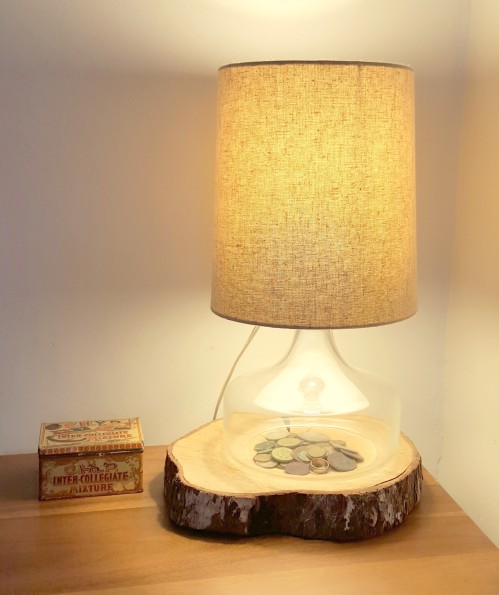 Other examples of compromise are the successful placement of Will’s art throughout the house. Every canvas showcased on a wall in the house is a Will Lord original, and is painted in the couple’s attic studio. Even in the most traditional of settings, his pieces are complementary and appropriate.
Other examples of compromise are the successful placement of Will’s art throughout the house. Every canvas showcased on a wall in the house is a Will Lord original, and is painted in the couple’s attic studio. Even in the most traditional of settings, his pieces are complementary and appropriate.
Decorating your home with a mix of contemporary, modern, and country is not only in vogue, it is also fiscally conscious. Affordability to today’s home buyers is a top consideration. Who needs a Restoration Hardware chair for $500 when you can buy the original for less than half? Why get a console for your TV from a big box store when you can buy a steamer trunk, similar to the one the Lord’s own, for $50? This contemporary decorating style acknowledges inflated retail prices, allowing for more cost-effective and personal decorating to prevail. Visiting auctions for fun pieces to spruce up or repurpose is an enjoyable exercise for those on a budget.













